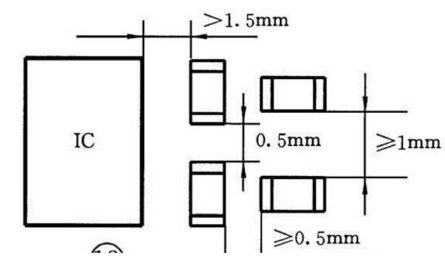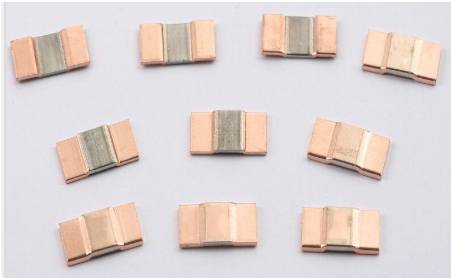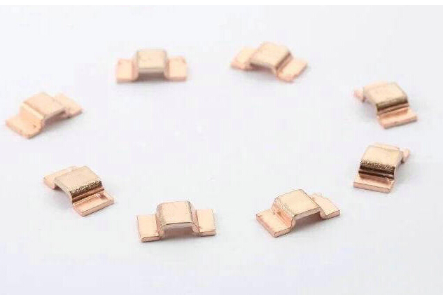Position:Home » Technical Articles
Resistor's Rated Power Judgment and Calculation Method
Writer:Microhm Page View:Date:2019-04-19
The rated power of a resistor is the rate at which energy is converted into something. It is calculated by multiplying the voltage difference between two points by the current between them. The rated power of the resistor is measured in watts W. For example, a light bulb converts electricity into light, but a resistor can only convert electrical energy that passes through it into heat. Heat is usually not the energy required for a resistor product. If the resistor is too hot, it can easily lead to burnout of the circuit and even affect the operation of other electronic components!

Each resistor we use has a specific maximum power rating. To prevent overheating of the resistor, it is important to ensure that the power across the resistor remains below its maximum rating. The rated power of the resistor is measured in watts and is typically between 1⁄8W (0.125W) and 1W. Resistors with a rated power greater than 1W are often referred to as power resistors and are dedicated to their power dissipation capabilities.
How to determine the rated power of a resistor, we can usually infer the rated power of the resistor by observing its package size. Standard through-hole resistors typically have a 1⁄4W or 1⁄2W rating. If the rated power of the resistor has a special purpose, the surface of the power resistor will generally have a digital representation of the rated power of the resistor.

The common types of power resistors are 25W, 5W and 3W rated power. Smaller power resistors are commonly used to sense current. The rated power of surface mount resistors can usually also be judged by their size. The resistors such as 0402 and 0603 are usually rated at 1 / 16W, and the 0805 can be 1 / 10W.
The power of the resistor is measured, usually by multiplying the voltage and current to calculate the power (P = IV). However, by applying Ohm's law, we can also use the resistance value to calculate the power. If we know the current through the resistor, we can calculate the power as: P = I ^ 2 * R. Alternatively, if we know the voltage across the resistor, the power can be calculated as: P = V ^ 2 / R. If the resistors are always paired in the electronics, they are usually in series or parallel.

When resistors are combined in series or in parallel, they produce total resistance, which can be calculated using one of two equations. If you need to create a specific resistor value, it is useful to know how the resistor values are combined.

How to determine the rated power of a resistor, we can usually infer the rated power of the resistor by observing its package size. Standard through-hole resistors typically have a 1⁄4W or 1⁄2W rating. If the rated power of the resistor has a special purpose, the surface of the power resistor will generally have a digital representation of the rated power of the resistor.

The common types of power resistors are 25W, 5W and 3W rated power. Smaller power resistors are commonly used to sense current. The rated power of surface mount resistors can usually also be judged by their size. The resistors such as 0402 and 0603 are usually rated at 1 / 16W, and the 0805 can be 1 / 10W.
The power of the resistor is measured, usually by multiplying the voltage and current to calculate the power (P = IV). However, by applying Ohm's law, we can also use the resistance value to calculate the power. If we know the current through the resistor, we can calculate the power as: P = I ^ 2 * R. Alternatively, if we know the voltage across the resistor, the power can be calculated as: P = V ^ 2 / R. If the resistors are always paired in the electronics, they are usually in series or parallel.

When resistors are combined in series or in parallel, they produce total resistance, which can be calculated using one of two equations. If you need to create a specific resistor value, it is useful to know how the resistor values are combined.
Keywords:resistor
Latest News
- Resistor's role in measuring and correcting LED,,,
- Single through-hole resistors' characteristics ,,,
- Why shunt resistors for current sense applicati,,,
- Metal-film resistors with small size, high resi,,,
- 36W High-Current Shunt Resistors MMS8420,,,
- 1W Surface Mount Resistor MPR1206,,,
- An Overview of Microhm Electronics' Resistor Pr,,,
- More anti-sulfur resistors used in harsh envir,,,
- Resistance changes with temperature,,,
- 140W TO247 High Power Heatsinkable Resistor,,,
- MMS5930 is ideal for current sensing in industr,,,
- Shunt resistors selection for engineers' design,,,
- Considerations for choosing precision resistors,,,
- Ceramic Encased Cement Resistors NWH Series for,,,
- Resistors for Passive Balancing in Battery-Pow,,,
Hot Articles
- Microhm will take part in 10th Automotive World,,,
- Thanks for Visiting Microhm's Booth E5-5706 in ,,,
- Resistors in Short Supply: Blame Cars,,,
- New lunch: High Power Precision Shunt Resistor,,,,
- How to Test a Resistor,,,
- Innovative Technology, Future Electric: Electri,,,
- What is Precision Resistors?,,,
- SMD Resistors Sizes and Packages,,,
- The Construction and Features of Metal Film Res,,,
- What is a TO-220 Resisor?,,,
- Hot Selling Products: Precision Shunt Resistors,,,
- How to Calculate the Equivalent Resistance Valu,,,
- What is a Fixed Resistor?,,,
- Resistors in LED Circuits,,,
- Resistors Types and Materials Overview,,,
Resistance applications
- Miniature future for passive electronic compone,,,
- The Main Application for High Precision and Low,,,
- Precision Resistors' Construction and TCR,,,
- Select the Right Resistor for Harmonic Filterin,,,
- BMS for New Energy Vehicle,,,
- Difference Between High Precision Resistors and,,,
- Shunt Resistor MMS8420 for High Current Stable ,,,
- The Measurement Accuracy of Automotive Shunt is,,,
- Carbon Film Resistors' Features and Application,,,
- Heater Blower Motor Resistor in Air Conditioner,,,
- Surface Mount Resistor's Size and Package ,,,
- Why Zero-Ohm Resistors?,,,
- The Four Important Functions of Alloy Resistors,,,
- Industrial Roberts Applied to Solar Photovoltai,,,
- Urbanization Development Bringing the Transform,,,
